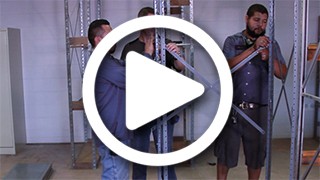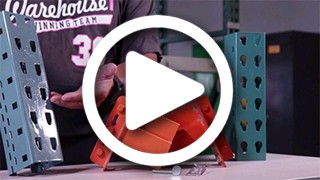How Do I Design the Right Cantilever Rack System for My Operation?
In order to properly design a cantilever rack system, you must know what product (load) you are storing: the length, depth, height and weight of the product. Once you know this, designing the system is as easy as finding out the required number of arms, uprights and braces.
A. Determine the number and spacing of support arms.
- The load must be supported by the proper number of cantilever rack arms to prevent deflection. Deflection causes undesirable side pressure on the arms, which may cause damage to load being stored as well as the arms.
- To test the load for deflection, use two wood blocks on the floor under the load. If deflection is not present, a two arm system is acceptable as long as this does not cause an overload condition.
- If deflection occurs, use three wood supports and continue adding supports until deflection is eliminated.
- The product should overhang the end of the rack by ½ of the upright centerline distance. Failure to do so could cause an overload.
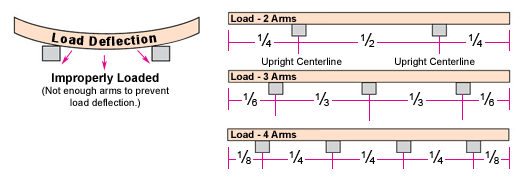
B. Determine the length of the arm.
- Cantilever rack arm length should greater than or equal to the depth of the load. See diagrams below for proper and improper loading techniques.
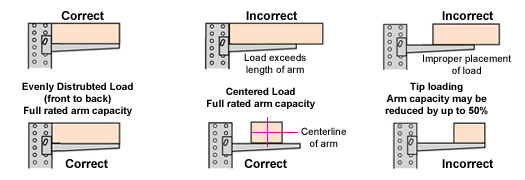
C. Determine the height of the upright
- It is important to check limitations in the building, items such as ceiling clearance, forklift height, sprinkler systems and local building codes.
- To determine cantilever rack upright height, add up the base height, the height of all loads to be stored, the arm thickness and 4-6″ handling clearance between all loads and arms.
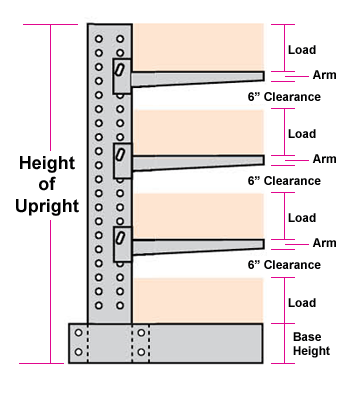
D. Determine arm and upright capacities.
- To determine required cantilever rack arm capacity, divide the load weight by the number of arms per level. (Based on an evenly distributed load.) The example is 7500 lbs. divided by 3 arms, so each arm is required to have 2500 lbs. capacity.
- Upright capacity equals the number of arms per side X the load per arm (load on the base is not included for upright capacity). Divide the total by the number of uprights. In our example there are 12 arms multiplied by 2500 lbs. each, which equals 30,000 lbs. Dividing that total by 3 uprights gives us a minimum required capacity of 10,000 lbs. per upright. The total arm capacity must never exceed the total upright capacity.
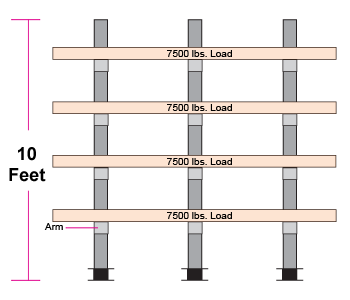
E. Determine brace length.
- Cantilever brace length refers to the horizontal centerline of upright to upright to the next upright.
- Choose the brace length that most closely matches the arm spacing selected in step A to prevent load deflection.
For more information on cantilever rack, visit Modern Equipment Company, Inc. Dennis McClintock has been with Modern Equipment Company for 27 years and is Vice President of Sales.

